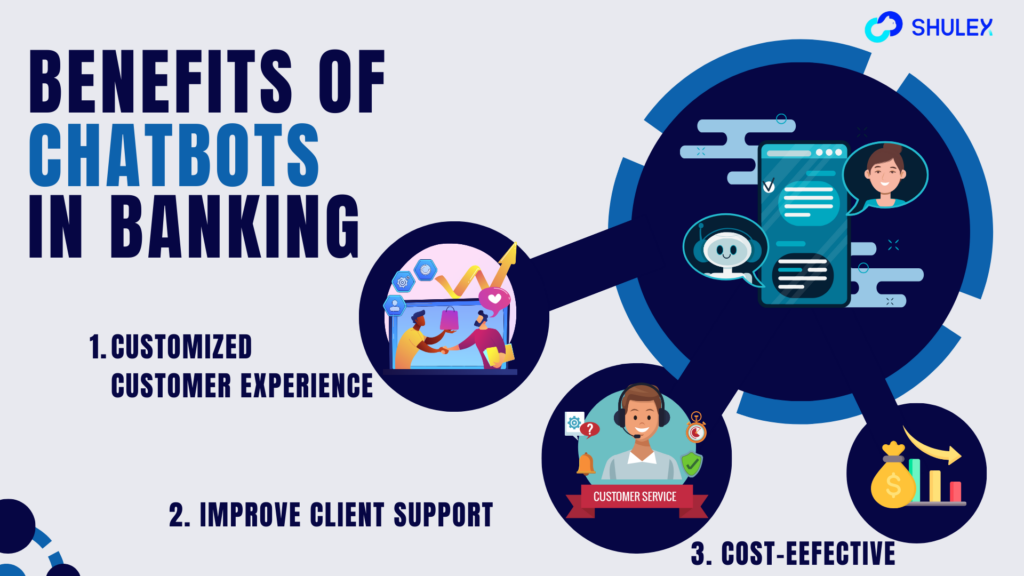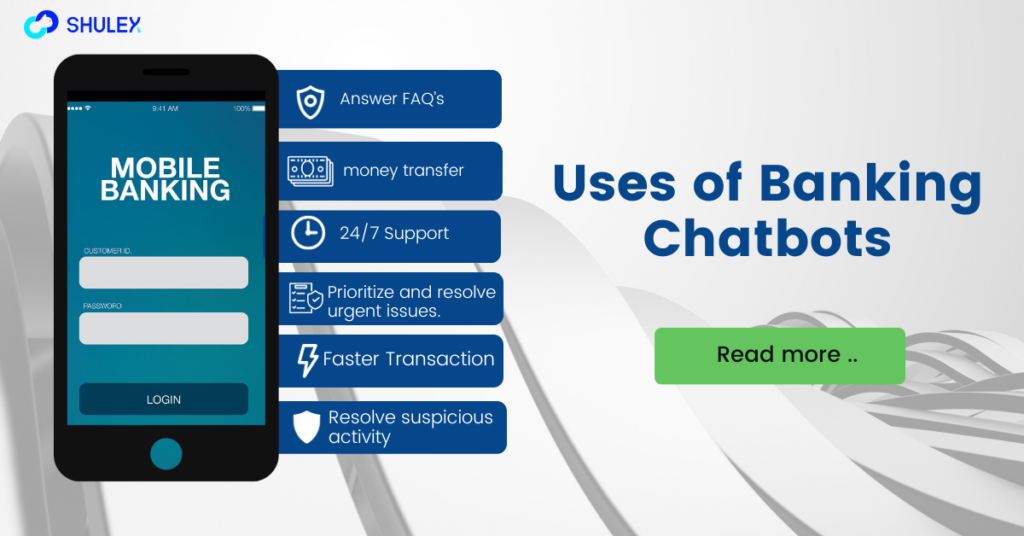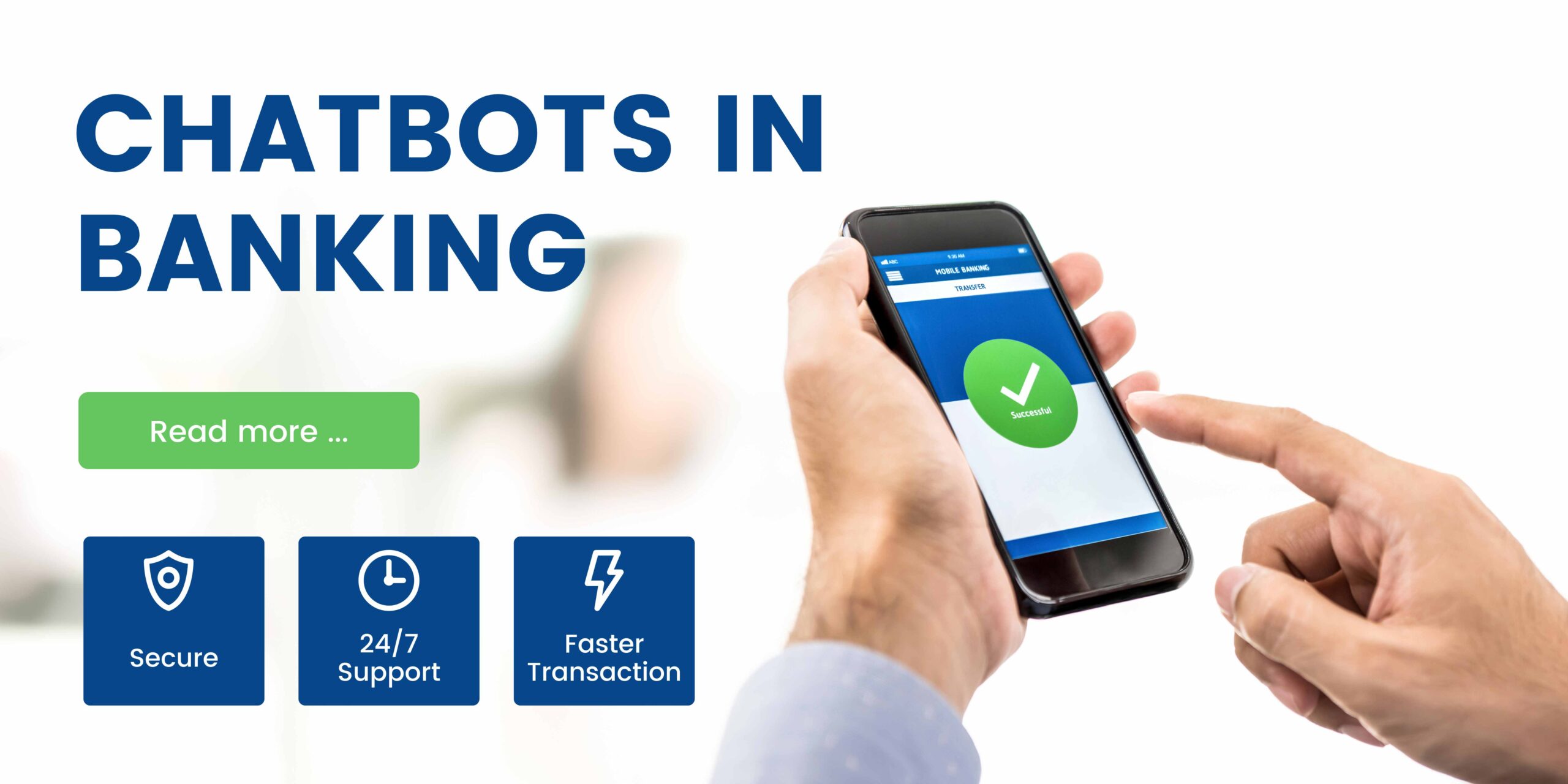
Have you ever tried to contact your bank, but you only find yourself caught in a never-ending question of "press 1 for inquiries" and "press 2 for checking"? It's annoying, isn't it? Now, reverse the situation and picture yourself as the person whose clients are caught in that cycle. It's not the best image for your brand, is it? Let me introduce AI chatbots, a revolutionary technology that is transforming the banking industry's client experience.
Let's dig deeper into the world of Ai technology and learn how you can use it for your banking business as you grow.
Nearly 90% of bank interactions (internal and external) are automated through AI chatbots.
– Juniper Research
- What is Ai banking Chatbots?
- What are the benefits of using Chatbots on banking?
- Uses of Banking chatbots
- Conclusions
What is Ai banking chatbots?
Banking chatbots are computer programs that use artificial intelligence (AI) and natural language processing (NLP) to simulate human-like conversations with customers in the banking industry. These chatbots can be integrated into various communication channels such as websites, mobile apps, and messaging platforms to provide customers with quick and efficient assistance with their banking needs.
Banking chatbots can perform a variety of tasks such as answering frequently asked questions, providing account information, helping customers with transactions, and even offering financial advice. They can also learn from customer interactions and improve their responses over time, making them more effective and efficient in serving customers.
What are the benefits of using Chatbots on Banking?

1. Customized Customer Experience- Natural language processing, or NLP, is used by many chatbots to assess client needs and deliver precise responses or solutions. Waiting for a customer's real-time solution to be resolved to a greater extent is possible with chatbots offering 24/7 customer support. Additionally, through their interactions, chatbots gather customer data—both historical and current—which facilitates more individualized customer interactions. Lastly, and perhaps most significantly, since chatbots can be trusted to provide precise responses, they eliminate human error.
Saying that conversational banking is the way of the future wouldn't be incorrect. In banking, chatbots can assist with essential customer service and support tasks.
2. Improve Client Support- Approximately 60% of clients anticipate receiving individualized attention. In this case, chatbots are far more effective at using customer data to provide each individual customer with a customized service (after obtaining the consent of the consumer to access their data).
Banks are constantly searching for methods to improve customer experience and satisfy customers' expectations, given the evolution of customer expectations in recent years.
3. Cost-effective- According to Juniper Research reports, the global savings on operating costs associated with the use of chatbots in banking will increase from an estimated $209 million in 2019 to $7.3 billion by 2023. In addition to instant customer support, chatbots provide round-the-clock assistance, thereby elevating customer contentment.
Additionally, chatbots lessen the need for human resources to respond to client inquiries. It is also skilled at accurately managing several chats at once. Nearly 57% of respondents to an Accenture study agreed that chatbots could generate a sizable return on investment with little work.
Uses of Banking chatbots

1. Answers FAQ’s- Consumers should not have to call their bank branch and wait on hold to receive answers to frequently asked queries. Banks can help consumers find answers to inquiries such as these by utilizing chatbots.
- How am I doing with my balance?
- When do branches open for business?
- What is my rate of interest?
- In what way can I apply for credit?
Even better, banks can offer this service 24/7 for a minimal fee by utilizing chatbots.
2. Money transfer- Chatbots can be used by users to track financial transactions, set up or cancel payments, and pay bills. Additionally, chatbots can charge prepaid cards and settle credit card debt.
3. 24/7 support- Because a conversational AI chatbot is always available, never forgets anything, never gets sick, and never becomes unproductive, it can assist you in offering great customer service. To finish daily tasks and improve the client experience in the digital banking industry, banks can install AI chatbots.
4. Prioritize and resolve urgent issues. In the banking sector, chatbots can assist clients with simple yet pressing problems. These problems include resetting, checking bank statements, unlocking, or locking cards, and completing fund transfers. Customers can finish the entire process without having to wait on the phone thanks to an AI chatbot.
5. Feedback Collection- Completing lengthy questionnaires and feedback forms can be a hassle. A chatbot's ability to generate and comprehend natural language can engage users.
6. Resolve suspicious activity- Unfortunately, fraud is still a constant issue in the online banking sector. However, chatbots can be a useful tool in this fight against fraud. You can assist clients in recognizing the early warning indicators of fraud by using proactive chatbot messages.
When there is unauthorized account access or suspicious activity, a chatbot can notify customers right away. Chatbots can assist customers in reporting fraud once they have been alerted.
For this task, a chatbot can identify fraud instances in real-time by using data access, which is an advantage over using a customer service representative. Reviewing is not required. As soon as suspicious activity is discovered, an alert can be sent.
Conclusions
AI chatbots have indeed revolutionized customer experiences in the banking sector. They provide a more efficient and personalized way for customers to interact with their banks, eliminating the frustration of navigating through endless phone menus. With AI chatbots, customers can get instant responses to their queries, access account information, make transactions, and receive personalized recommendations, all in a conversational manner. This technology not only enhances customer satisfaction but also helps banks streamline their operations and improve overall efficiency.
Additionally, it has been observed that individuals feel more at ease interacting with chatbots because they are more capable and effective at answering questions than real agents.
People have been willing to switch to digital transactions across financial institutions of all sizes, according to the financial industry, ever since the pandemic began. Customers are also more open to switching to more digital activities these days. Financial industries are now adopting new technology in a more proactive manner to meet customer expectations and expand their customer base through digital channels.






